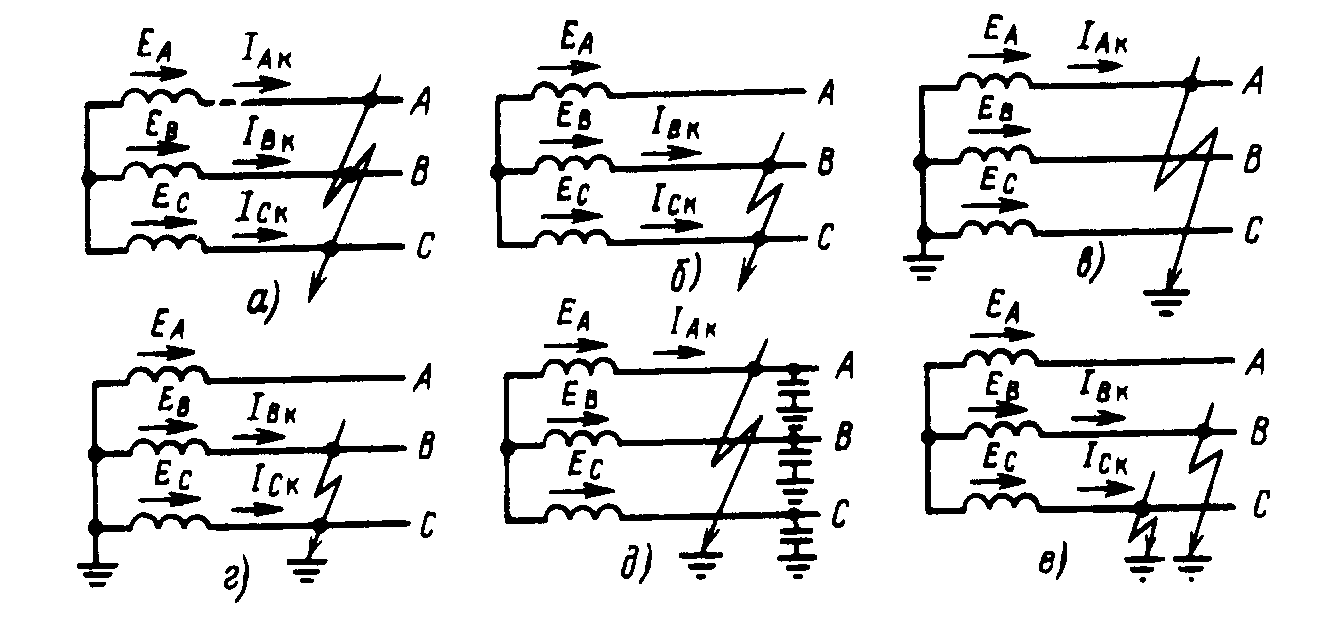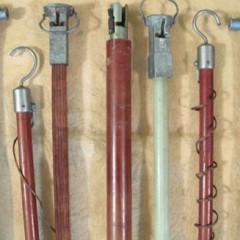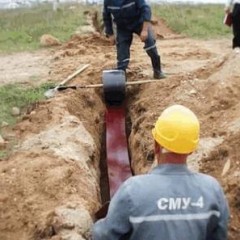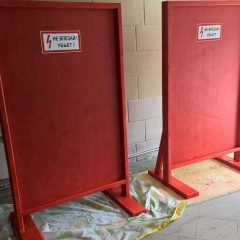Faults in electrical installations and their causes
Causes of Breakdowns
So, the main causes of damage in electrical installations are:
- network congestion;
- low voltage;
- operation of an electric machine in two phases;
- overvoltage;
- pulse overvoltage of switching processes;
- long life of the electrical installation;
- mechanical damage during installation and repair.
- errors of the staff itself (for example, inattention or ignorance of the scheme).
Types of faults and protection methods
Current exceeding the nominally acceptable parameters causes heating of the conductive core, which in turn leads to the destruction of the insulating sheath. In such cases, fires are frequent, as well as short circuits between the conductors and the failure of an extensive section of the electrical network. This is network congestion.
The main types of short circuit in electrical installations:
- short circuit between phases;
- phase short to ground;
- interturn circuit in an electric machine or transformer.
To prevent the development of short circuit, circuit breakers are installed that respond to a sharp increase in current, cutting off a network section, preventing large-scale damage.
The consequences of a short circuit in an electrical installation are clearly shown in the video:
The increased voltage caused by transients in the network, such as disconnecting a powerful consumer, negatively affects most modern equipment. Because of this, consumer electronics and poor insulation in electrical appliances are most often affected.
Low voltage - This is nothing good for electrical installations such as electric motors and transformers. At low voltage, in order to maintain the parameters, the current consumption increases, current overload occurs, and all damage associated with it. To combat this phenomenon using voltage relay.
Phase failure in a three-phase network on a running motor or transformer leads to phase imbalance and increasing current rating. Further, as in the first paragraph, overheating of the conductor, reduction of the properties of the insulating layer, breakdown of insulation and short circuit with the burning out of a large section of the electrical winding. To prevent this abnormal operation, use phase control relayinstalled directly next to the car. And thermal relayscontrolling the amount of current, which is proportional to the mode of operation.
Overvoltage in the network from a lightning strike can be eliminated by installing a special arrester module (surge suppressor)This device responds to high-voltage surges and extinguishes them with a special circuit, turning the surplus into heat. If you do not have this device installed, then during a thunderstorm in order to prevent damage, it is best to disconnect the electrical system by physically disconnecting it from the power supply, unplugging the plug from the outlet, and disconnecting the machines.
Surge and unstable voltage in the power grid as a result of an unevenly distributed load can be observed everywhere, no one is safe from this phenomenon.
As a result of transient processes in transformer substations, when one phase of the consumers is overloaded, the internal processes of the transformer seek to balance and compensate for uneven flows, an increased voltage is observed on the remaining phase wires, which differs from the established network parameters. To protect home equipment, in this case, a pH relay is installed, from pulse surges of the arrester.
So we examined the main damage in electrical installations, the causes of abnormal operating conditions and methods of protecting equipment from failure. We hope the information provided was useful and interesting for you!
Surely you do not know:







